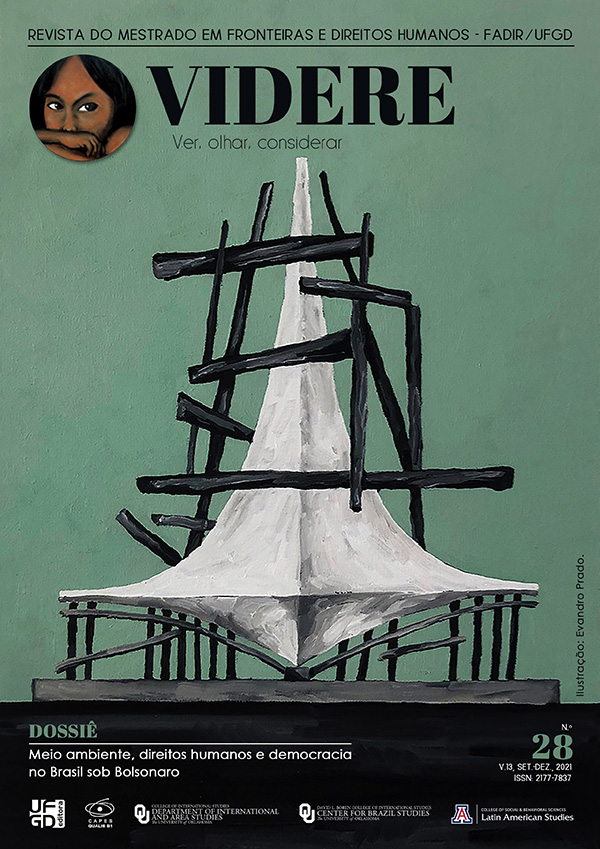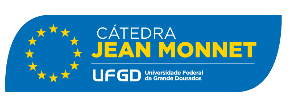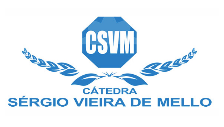“They are almost humans like us”: indigenous politics and policy dismantling under Bolsonaro’s government
DOI:
https://doi.org/10.30612/videre.v13i28.15236Keywords:
Indigenous peoples, Bolsonaro, indigenist policy, BrazilAbstract
This paper argues that three ongoing dismantling processes target the Brazilian indigenist policy under Bolsonaro’s government: (1) the dismantling of the land claims recognition policy and institutions; (2) the dismantling of the protection of indigenous lives due to the increasing violence against indigenous peoples and the COVID-19 pandemic; and (3) the dismantling of the integrity of traditional territories related to government plans to open indigenous lands to large-scale agricultural and mining operations. On the other hand, we point out that Brazilian indigenous movements’ contemporary strategies are developing to fight back against the dismantling of indigenist policy. We use primary and secondary data to investigate those topics, discussing them in depth using the policy-dismantling theoretical framework. We conclude by pointing to the fact that the ongoing dismantling may contribute to the genocide of Brazilian indigenous peoples.
Downloads
References
ALCANTARA, Christopher. Negotiating the Deal: Comprehensive land claims agreements in Canada. Toronto: University of Toronto Press, 2013.
ARAÚJO, Ana Valéria. Terras indígenas no Brasil: retrospectiva, avanços e desafios do processo de reconhecimento. In: RICARDO, Fany (Org.). Terras indígenas e unidades de conservação da natureza: o desafio das sobreposições. São Paulo: Instituto Socioambiental, 2004. https://www.socioambiental.org/banco_imagens/pdfs/10144.pdf.
AVRITZER, Leonardo. Um balanço da participação social no Brasil pós-constituição de 88. In: AVRITZER, Leonardo (Org.). Experiência democrática, sistema político e participação popular. São Paulo: Editora Fundação Perseu Abramo, 2013.
BAINES, Stephen Grant. “É a FUNAI que sabe”: A Frente de Atração Waimiri-Atroari. Belém: Museu Paraense Emílio Goeldi/CNPq/SCT/PA, p. 362, 1991.
____________________. Territórios, territorialização, territorialidades indígenas e os direitos à terra. In: Raízes, v. 34, n. 2, jul-dez 2014.
____________________. “Um estado dentro do estado”: protagonismo indígena e os programas indigenistas da Eletronorte—o programa Waimiri-Atroari. In: SILVA, G. J. da; SILVA, C. A. da (Orgs.). Protagonismos indígenas na Amazônia brasileira. Palmas: Nagô Editora, p. 55-72, 2018.
BARCELOS, Eduardo Álvares da Silva; BERRIEL, Maycon Cardoso. Práticas Institucionais e Grupos de Interesse: A geograficidade da Bancada Ruralista e as estratégias hegemônicas no Parlamento Brasileiro. Anais do XIX Encontro Nacional de Geografia, São Paulo, p. 1-32, 2009.
BAUER, Michael W; KNILL, Christoph. Understanding Policy Dismantling: An Analytical Framework. In: BAUER, Michael W; JORDAN, Andrew; GREEN-PEDERSON, Christoffer; HÉRETIER, Adrienne (Eds.). Dismantling Public Policy: Preferences, strategies, and effects. Oxford: Oxford University Press, 2012.
BELLIER, Irène. Peuples autochtones dans le monde: les enjeux de la reconnaissance. L’Harmattan, 2013.
BRASIL. Censo demográfico de 2010. Instituto Brasileiro de Geografia e Estatística, 2010.
_______. Comissão Nacional da Verdade. Violações de direitos humanos de povos indígenas, p. 204-262, 2014.
CONSELHO INDIGENISTA MISSIONÁRIO (CIMI). Relatório Violência Contra os Povos Indígenas no Brasil, 2019.
CORNELL, Stephen. Indigenous Peoples, Poverty, and Self-Determination in Australia, New Zealand, Canada, and United States. Native Nations Institute for Leadership, 2006.
COSTA, Sandra Helena Gonçalves. A questão agrária no Brasil e a bancada ruralista no congresso nacional. Tese de doutorado não publicada. Departamento de Geografia, Universidade de São Paulo, 2012.
DAVIS, Shelton H. Victims of the Miracle: Development and the Indians of Brazil. Cambridge: Cambridge University Press, 1977.
DIAP. Radiografia do novo Congresso, 1994.
_____. Radiografia do novo Congresso, 1998.
_____. Radiografia do novo Congresso, 2002.
_____. Radiografia do novo Congresso, 2006.
_____. Radiografia do novo Congresso, 2010.
_____. Radiografia do novo Congresso, 2014.
_____. Radiografia do novo Congresso, 2019.
INSTITUTO BRASILEIRO DE GEOGRAFIA E ESTATÍSTICA (IBGE). Censo Brasileiro de 2010. Rio de Janeiro: IBGE, 2010.
LIMA, Antonio Carlos de Souza. Reconsiderando poder tutelar e formação do estado no Brasil: notas a partir da criação do Serviço de Proteção aos Índios e Localização de Trabalhadores Nacionais. In: FREIRE, Carlos Augusto da Rocha (Org.). Memória do SPI—Textos, imagens e documentos sobre o Serviço de Proteção aos Índios (1910-1967), 2013.
__________________________. Sobre Tutela e participação: povos indígenas e formas de governo no Brasil, séculos XX/XXI. In: Mana, v. 21, n. 2, 2015.
McNEISH, John-Andrew. The Devil Never Left: Indigeneity and Protest in Morales’ Bolivia. In: BERG-NORDLIE, Mikkel; SAGLIE, Jo; SULLIVAN, Ann (Eds.). Indigenous Politics: Institutions, representation, mobilization. Colchester, England: ECPR Press, 2015.
PLANT, Roger. Issues in Indigenous Poverty and Development. Inter-American Development Bank Discussion Paper, Washington D.C., 1998.
RAMOS, Alcida Rita. Anthropologist as a Political Actor. In: Journal of Latin American Anthropology, v. 5, n. 1, 2000.
RIBEIRO, Darcy. 1979 [1970]. Os Índios e a Civilização: a integração das populações indígenas no Brasil moderno. Petrópolis: Vozes, 3ª ed.
RODRIGUES, Maria Guadalupe Moog. Indigenous Rights in Democratic Brazil. In: Human Rights Quarterly, v. 4., n. 2, p. 487-512, 2002.
SOARES, Leonardo Barros. Ciclos de protesto e repertório de ação do movimento indígena brasileiro entre 2009 e 2016: o caso da PEC 215.In: Revista Brasileira de Ciência Política, n. 24, p. 191-222, 2017.
______________________. (Un)changing Indigenous Land Claims Policy: Evidences from a cross-national comparison between Brazil and Canada. Tese (Doutorado em ciência política—Instituto de Filosofia e Ciências Humanas, Universidade Federal de Minas Gerais, Belo Horizonte, 2019.
SOARES, Leonardo Barros; COSTA, Catarina Chaves; FONSECA, Marina de Barros; COSTA, Victor Amaral. Fatores explicativos das demarcações de terras indígenas: uma revisão de literatura. In: BIB, n. 96, p. 1-24, 2021.
VALENTE, Rubens. Os fuzis e as flechas: história de sangue e resistência indígena na ditadura. São Paulo: Companhia das Letras, 2017.
Downloads
Published
How to Cite
Issue
Section
License
Copyright (c) 2022 Revista Videre

This work is licensed under a Creative Commons Attribution-NonCommercial-ShareAlike 3.0 Unported License.
Authors must accept the publication rules when submitting the journal, as well as agree to the following terms:
(a) The Editorial Board reserves the right to make changes to the Portuguese language in the originals to maintain the cultured standard of the language, while respecting the style of the authors.
(b) Authors retain the copyright and grant the journal the right to first publication, with the work simultaneously licensed under the Attribution-NonCommercial-ShareAlike 3.0 Brazil (CC BY-NC-SA 3.0 BR) that allows: Share - copy and redistribute the material in any medium or format and Adapt - remix, transform, and create from the material. CC BY-NC-SA 3.0 BR considers the following terms:
- Attribution - You must give the appropriate credit, provide a link to the license and indicate whether changes have been made. You must do so under any reasonable circumstances, but in no way that would suggest that the licensor supports you or your use.
- NonCommercial - You may not use the material for commercial purposes.
- Sharing - If you remix, transform, or create from material, you must distribute your contributions under the same license as the original.
- No additional restrictions - You may not apply legal terms or technological measures that legally restrict others from doing anything that the license permits.
(c) After publication, authors are allowed and encouraged to publish and distribute their work online - in institutional repositories, personal page, social network or other scientific dissemination sites, as long as the publication is not for commercial purposes.



















